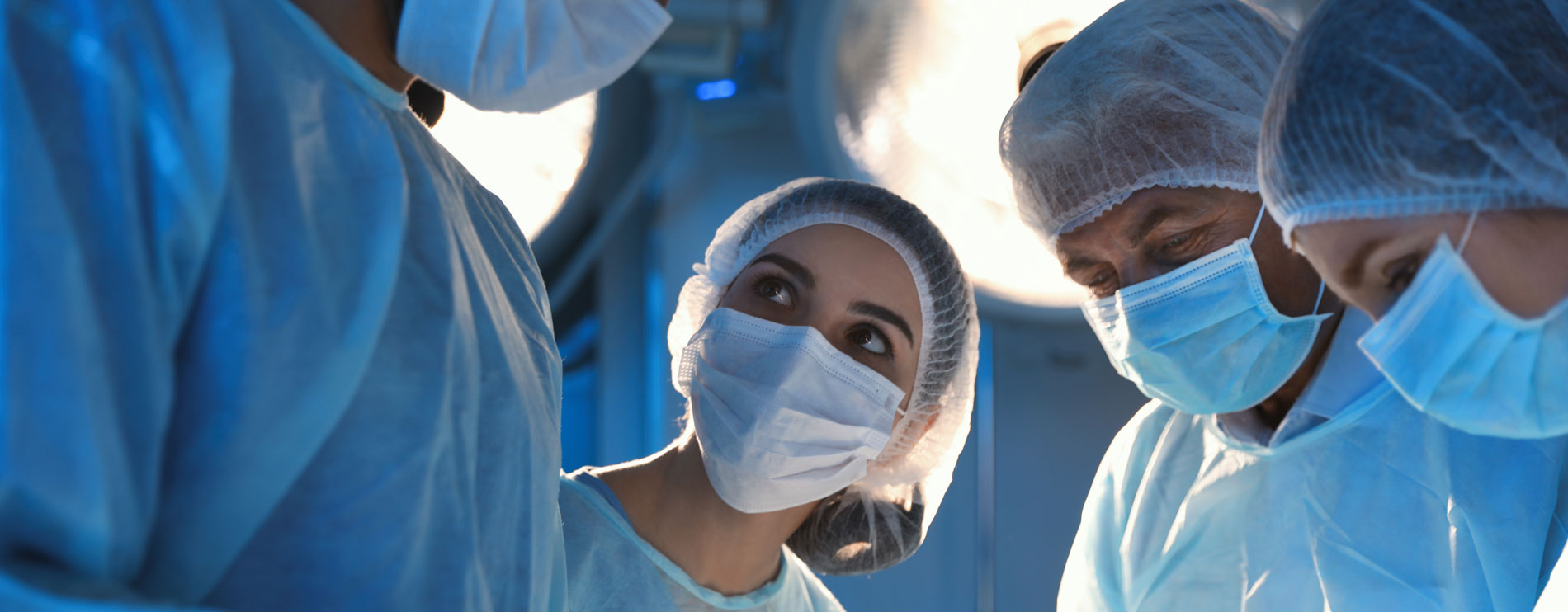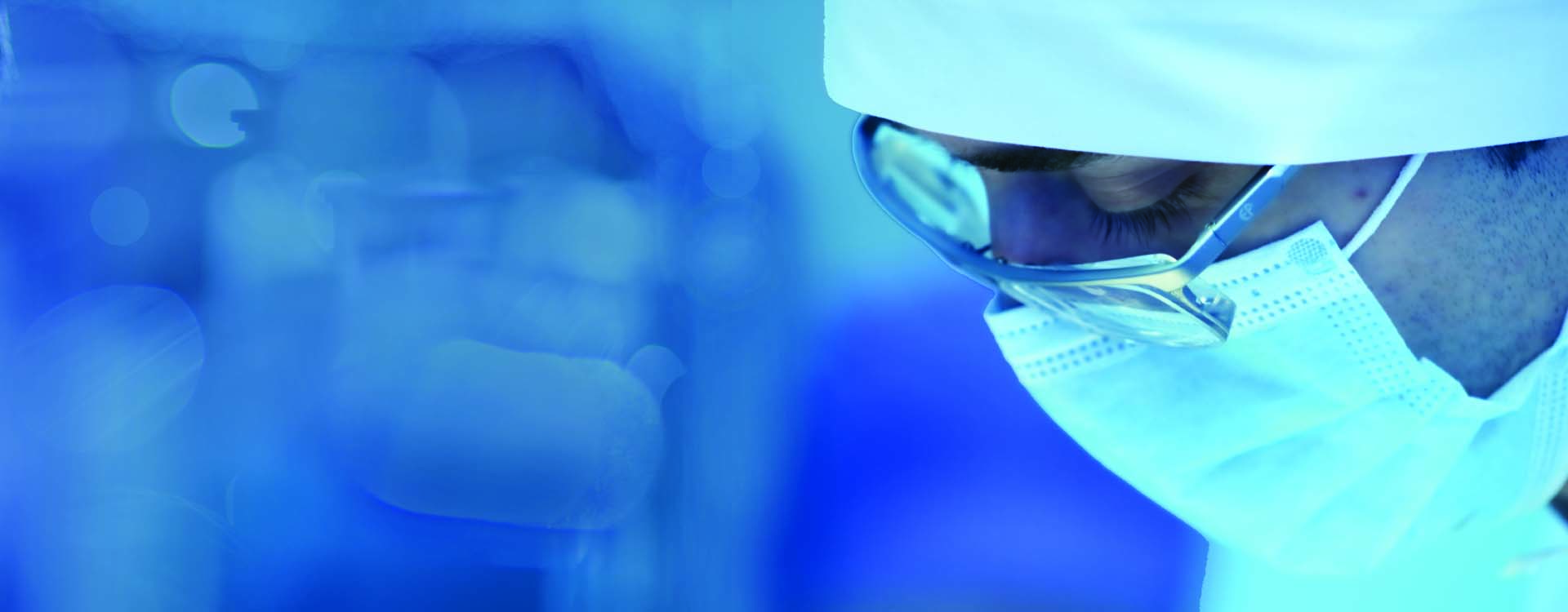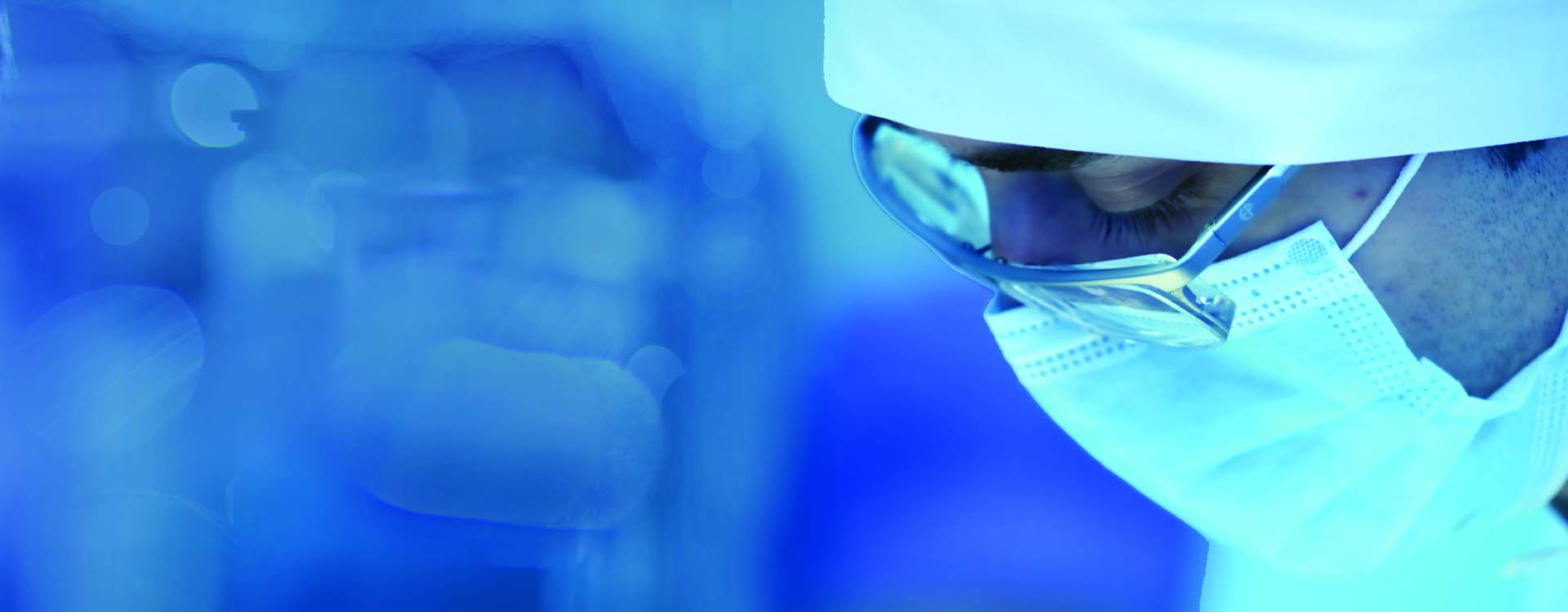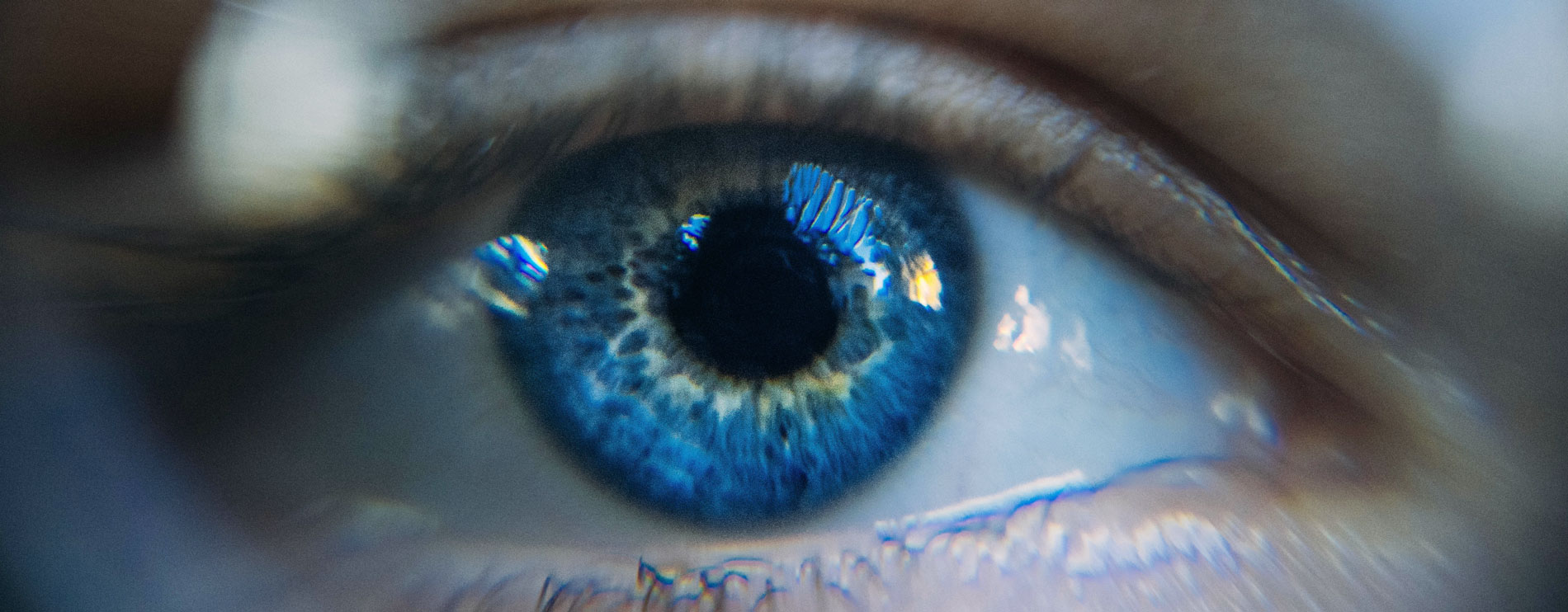About ParagonCare
ParagonCare is comprised of 4 strategic pillars: Specialty Diagnostics, Specialty Devices, Capital and Consumables and Service and Technology
Surgical supplies play a critical role in all healthcare environments. No matter what procedure a doctor may be performing, whether it be life-saving or something more routine, having the correct supplies on hand is essential in ensuring that the surgery is completed safely and easily.
There are many companies out there that can provide medical surgical supplies, but at Paragon Care we can guarantee that we offer supplies of the highest quality. How can you determine if the supplies you purchase are some of the best on the market? Read on to learn more!
Quality
Saying that the quality of your surgical supplies has a direct impact on the quality of patient care provided is an understatement. Supplies or equipment that breaks or does not perform its designated function correctly will only result in accidents during procedures, affecting both the ease of completing surgery for the operating team and the quality of service for the patients.
Discerning the quality of supplies can be difficult, particularly if you’ve never used a particular brand or product before. It’s highly recommended to do some online research by checking other buyer reviews, and by speaking with colleagues in your field who may have a recommended brand. It’s always wise to partner with a supplier that you have confidence in and have used before or heard good things about.
Regulatory approval
Any supplies that you plan on purchasing need to meet TGA or Therapeutic Goods Administration standards. This organisation is responsible for protecting the safety of both patients and clinicians, and they will assess and approve supplies before they can be used in an operating room.
All surgical supplies — in fact, all medical equipment — must be approved by the TGA before they can be manufactured, marketed, sold, and used in Australia. If the supplies you intend to purchase are not on their Register, it’s best to steer clear. Shopping through an experienced and industry-recognised supplier is a good way to ensure that the supplies you are purchasing have been approved by the TGA and are safe for use.
Accessibility
The Covid-19 pandemic has made it clear just how critical supply chains are. The current world climate makes it hard to know when the accessibility of healthcare supplies is going to be affected and finding a way to mitigate this could be essential. You may find that some suppliers, even at the best of times, may have difficulty meeting your demand, or providing your supplies promptly. Knowing that you are always going to have the necessary equipment on hand is critical in the medical industry, so that makes this factor particularly important to consider when purchasing consumable supplies, which by nature, are likely to run out quickly and require constant restocking.
Before purchasing these products, consult with the supplier to ask how robust their supply chain is and how often they restock. Also, ask them how they handle supply and demand during critical periods to get an understanding of how much you should buy in bulk to ensure you have enough to last should there be a shortage.
Environmental impact
Being environmentally conscious is a big concern for many people and companies these days as our climate continues to change and it’s important to try and make positive changes wherever possible. All industries have a role to play in this, including healthcare.
So when you are shopping for your medical surgical supplies, even though it can be difficult, try to put some effort into looking for environmentally-friendly products. Try to think carefully about the materials that are being used to make your supplies and the overall environmental footprint created through the manufacture, transportation, and disposal of products. As most surgical products do need to be disposed of after use for hygienic reasons, it can be hard to reduce your waste in the medical industry, but every bit counts.
Service and support
Purchasing medical equipment is much more than a once-off transaction. For equipment that will be used multiple times, it is going to need ongoing maintenance and repairs to ensure that you are always able to supply the highest-quality patient care. So when you are purchasing equipment, make sure to consider the entire life cycle of the product, including repairs and maintenance throughout its life. The cost and availability of maintenance, repair, and service need to be a factor in your decision-making process.
A good supplier like Paragon Care will have a dedicated service and technology team ready to supply medical equipment services, including ongoing repair as you continue using your products. Partnering with a trustworthy supplier means that you can turn your full attention to the health and well-being of your patients, rather than spending time worrying about the accuracy and performance of equipment.
Many other factors will impact your final choice of supplier when looking to purchase medical surgical supplies so if you have any other questions about what exactly we can offer you, get in contact with Paragon Care’s friendly team to learn more about our products and how we can support you.

We are very excited to announce the launch of the REM SYSTEM Veterinary website. After many months of hard work, dedication and collaboration with our internal teams and the web developer, we are extremely delighted to officially announce that Phase 1 of the very first branded website developed on the Drupal CMS platform has just been launched. Phase 2 for this site will include an online product catalogue and resources via a secure portal.
Development on the REM SYSTEMS Veterinary website has been a huge team effort including Marketing team, the Veterinary sales team, and the web developer New Path Web. A huge shout out to Karla Tate for all her work on this one. We hope you like it!

On 11 September 2020, Lovell Surgical collectively worked towards delivering the first 18,000 of 816,000 (so far) COVID-19 Swab Kits with their partner 3DMEDiTech to the Department Of Health in Victoria. It has been an amazing effort to get to this point. Now the fun really starts.
The University of Melbourne has brought together industry partners and researchers for the development of an Australian-first; locally manufactured 3D printed nasal swab for coronavirus (COVID-19) testing.
3DMEDiTECH, a partner of the University’s Australian Research Council Training Centre for Medical Implant Technologies (ARC CMIT), has produced the swabs to respond to increased Australian demand for COVID-19 testing.

Identifying regions of interest is one of the first and most important steps in diagnosing urology issues in patients. An Ultrasound as a method for performing these examinations has grown leaps and bounds to become an inevitable part of Healthcare delivery. Urology is one of the applications where Ultrasound delivers incredible value to doctors looking for urology solutions as it provides a high-level of accuracy and reliability, which is necessary to ensure early detection. This means doctors are able to provide a precise diagnosis and appropriate treatment to patients.
So if you are looking to upgrade the selection of medical equipment supplies you have for urology examinations, read on to learn more about the ultrasound technology available through Paragon Care and how this tech can help with ease of use, and quality of treatment for patients.
What is an ultrasound?
An ultrasound is a diagnostic scan that is used to examine internal body structures. They work by emitting sound waves from a small handheld device, and then these sound waves are reflected back from the patient and into the device. From here, it is able to create a scanned image of what is happening inside the body. Ultrasounds are mostly associated with pregnancy, but they actually have a wide range of applications.
Ultrasound scans are favored as they are generally non-invasive and don't require the use of dyes or radiation that are generally associated with other forms of examination, and is an essential device used across all healthcare settings. They also have the added benefit of being able to see the results immediately on a monitor instead of needing to wait for results to be available.
How are ultrasounds used in urology?
Urologists work with conditions affecting the kidneys, bladder, prostate, and male reproductive organs. When they are examining a patient, the main conditions they are looking for are:
These conditions, while the symptoms often display outwardly, it is difficult to give a definitive diagnosis without looking inside the body. An ultrasound is the most common method used to get an interior perspective in urology and can provide doctors with an official diagnosis and something to base their treatment plan on.
Conditions related to the prostate and male reproductive system need to be examined internally, so a probe is often used and inserted into the rectum. When studying the bladder and kidneys the ultrasound is performed externally with a gel spread across the examination area to help transmit the soundwaves. It’s important to obtain an ultrasound machine that is able to handle a wide range of examinations, both internal and external to ensure that you are able to examine all patients.
Selecting the Right Urology Point of Care Ultrasound System
At Paragon Care we offer a supply of BK Ultrasounds which come with unparalleled image quality and extensive range of sterilisable transducers designed for urologists. These systems are specifically designed to seamlessly integrate with MRI/Fusion and support robotic-assisted surgery. The units we offer have been selected based on their features, options, performance and price to ensure that you are able to find a unit that fits both your practice’s needs and budget.
BK bkSpecto Ultrasound Machine
Flex Focus 800 Ultrasound Machine
So if your practice doesn't have an ultrasound machine as one of yoururology solutions, it could be highly beneficial to get in contact with the team at Paragon Care to have a look at the medical equipment supplies we have on offer.

Surgical Specialties is an independent distributor of innovative medical devices to the Australian and New Zealand medical community.
The company was established in 2006 with the aim of supporting healthcare professionals in delivering the best possible patient outcomes by providing access to innovative products from leading medical brands around the world.
Through clinically proven products, we have carefully constructed an innovative and diverse product range to match our customer needs in the following areas:

Like most industries, the medical industry has largely moved online. There are many benefits to purchasing your medical and surgical supplies through online retailers like Paragon Care. The number of people who are looking to make purchases from either home or their workspace instead of going out shopping is constantly rising, and the online sale of medical equipment is going up.
With the coronavirus still so present in our everyday lives, is it workable to purchase medical products online, and are there any benefits to making your purchases this way? Many hospitals are also on the course now, and most of them are preferring to order their medical supplies through online channels, so let us briefly look at some of the benefits of purchasing hospital medical equipment online.
Plenty of variety
An online store is usually going to have more options for purchase than a brick and mortar retailer, and it will often also provide you with medical and surgical supplies in different colours or brands where a physical store might only stock one range. You will also be able to view stock from many medical equipment companies in Australia instead of just one or two and know that the online store will arrange shipping for you as well.
You stay up to date with new supplies
Another great benefit to doing your shopping for medical and surgical supplies online is that you are able to keep an eye on what new products are available, online websites are updated more frequently than the stock in a regular store and sometimes will even have an announcement to let you know when a new product is coming. New medical supplies may take time to reach the local stores and may force you to buy outdated ones, that is why it is important to procure your supplies from an online shop.
Convenience
When organising purchases online, you are free to shop at any hour of the day without concerns of closing times. This is great for individuals with erratic working hours who cannot guarantee that they will have time to go and visit a retailer in person before they close for the day. If you have a busy schedule, online will always be the way to go.
Privacy
There is also an added advantage of privacy when it comes to shopping online because the information about the type and quantity of purchases is only known to you and the online store, no competitor will know your move until the products are delivered.
Also, reputable sites will be well secured, allowing for safe transactions without the fear of being scammed. However, when shopping online, especially when making large purchases, it is always a good idea to look into the website you are purchasing from before hitting that buy button. There are lots of sites out there and it’s important to make sure you are buying from a reputable provider of medical equipment in Australia.
Customer Reviews
Another great way you can assure quality of the site and the products you are purchasing is customer reviews. When you shop for medical and surgical supplies online, you can find reviews from clients who have done business with that supplier before. This way you can access first hand information from clients who have already purchased equipment from the store and guarantee its quality before making a decision. This provision makes it a wise decision for you to look online every time you want to buy medical supplies, even if you are buying in person.
Cost-effective
Through online stores, it is a lot easier to browse different retailers in a short period of time to compare prices on specific products and even make multiple purchases from different stores. This is a lot harder in person and can result in you not getting the best deal for your medical and surgical supplies because it is easier and less time consuming to buy everything from one store without checking any others.
Shipping direct to you
Most of the online shops include shipping fees in the final price. After you pay the entire amount, the company will then collect your delivery address from their website and organise for shipping and delivery of your items.
For larger, bulkier items, the shipping prices can often be quite high so it is advisable to try and find an online store that is as close to you as possible to reduce the shipping charges. Even at the higher price though, the convenience of having your products shipped directly to where you need them cannot be overstated.
By embracing online shopping, you cut out a lot of the legwork in searching for and purchasing new medical equipment for your Australian business, you can also save a lot of money and guarantee that you are getting quality goods. So if you are looking for medical and surgical supplies, look no further than Paragon Care for all of your online supply and equipment needs.

In the medical industry, it’s important to make sure that all equipment, especially that which is shared between patients; is properly disinfected and maintained. Paragon Care understands how important proper disinfection is in any and all healthcare settings and can offer our clients both consumable and high quality equipment to help make sure their workplace is safe for both staff and patients. There are strict rules and guidelines that need to be followed when sanitizing equipment and when maintaining any medical device that may come in contact with multiple patients.
Health care environments are always going to be areas where dangerous pathogens or germs are able to be spread from person to person at an alarming rate if not mitigated appropriately. So it’s always important to make sure that all healthcare equipment is well maintained and santised both before and after use. How thoroughly equipment needs to be cleaned depends on how it is used.
Non-Critical
A medical device in this category only needs to be cleaned when visibly soiled or on a regular basis, such as between patients. Though it would also need to be cleaned especially after contact with a patient who may have a risk of contamination. Only a low level disinfectant is required for any healthcare equipment in this category.
These devices either do not come in direct contact with a patient, or only touch the outside of clean skin.
Semi-Critical
This category is for a medical device that comes into contact with mucous membranes such as those found in the nose, pharynx or esophagus or non-intact skin. This kind of healthcare equipment needs to be cleaned with high-level disinfectant, which kind of disinfectant you use will depend on the material that the device is made of as using strong chemicals on certain materials can degrade its quality.
Critical
This final category refers to medical devices that need to be fully sterilized before use on each patient due to the high risk of pathogen exposure. Sterilization is different to standard disinfection because it is designed to kill all microbial life, usually by steaming the relevant healthcare equipment in extreme heat. This section includes surgical equipment, catheters, and implants. Essentially, any equipment that comes in contact with any sterile body tissues and fluids, such as internal organs or the cardio-vascular system. Devices that are made mostly of plastic cannot be steamed as the martial is too fragile and may begin to melt under the heat. Therefore it can also be sterilized using chemical sterilants.
Regardless of what category your healthcare equipment falls into, it’s important to follow the relevant disinfection requirements to make sure that all any medical device you have is properly cleaned and maintained. After years of sterilization though, it is always possible that your equipment will begin to degrade and in this instance you will need to hire a technician to maintain your equipment or fully replace it.
At Paragon Care, we believe in supporting our customers throughout the entire life cycle of an asset. So any of your equipment that needs to be maintained or repaired due to extensive disinfection we also offer maintenance with our team of over 50 technicians across Australia and New Zealand, all of whom are fully trained to manufacturer’s certification.
We are trained in healthcare equipment repair and maintenance, and we also make sure to sanitize any devices that require santisation before sale and can guarantee that all products we offer are clean and ready for medical use. Making sure all your equipment is safe for use is more important than ever in the current climate.
For more information on the repair of healthcare equipment degraded by excess sanitization of the best type of disinfectant for each device, contact the team at Paragon Care today. We can help you with the process of maintaining your equipment, and providing you with products to help keep your current medical devices clean, including covers for parts that come in contact with patients and other products relating to infection control.

Time to upgrade your medical surgical supplies? Considering working with a new supplier? It’s a big decision to make — after all, the quality of your supplies has a direct impact on the level of patient care you can provide.
As an experienced supplier of medical equipment in Australia, Paragon Care is perfectly positioned to support you through all your equipment, device, and consumable needs. If you are looking to purchase surgical supplies, we encourage you to contact our customer service team for tailored advice and recommendations. In the meantime, continue reading to learn more about the types of factors we encourage our customers to consider when buying any type of equipment and supplies.
Use value
If you often find yourself wishing you had a certain piece of equipment in your medical facility, chances are you’ll get enough use out of it to make the purchase worthwhile.
However, when shopping for medical surgical supplies, it can be easy to fall into the trap of purchasing products you simply don’t need. While it would be great to offer your patients as broad a range of tests and services as possible, you also need to look at your facility from a business perspective and calculate the use-value.
Perhaps it would be more efficient to refer patients to a nearby clinic if they require a certain diagnostic test? Alternatively, maybe you will attract greater numbers of patients by purchasing equipment yourself. As a healthcare manager, your insight into this balancing act is valuable and should be considered.
Consider long-term cost
Medical equipment is like any other type of equipment in that the price of purchase goes beyond the upfront cost. You will also need to consider long-term maintenance costs, whether at some point you will need to invest in spare parts, the cost of powering electrical equipment, and more.
The advantage of working with an experienced supplier like Paragon Care is that we will be able to provide informed, tailored advice on matters such as these. You’ll feel far more confident about the overall financial cost of your purchase having spoken to one of our customer service representatives.
Availability of spare parts
While you may be able to find medical equipment online, there’s no guarantee that the supplier you’re buying from is going to be able to support you through the full life-cycle of the asset.
What does this mean? Well, if further down the line you’re in need of a spare part or two (and you probably will be) an email to an online supplier may simply go unanswered. Suddenly you’re stuck with a piece of equipment that doesn’t function and is taking up space.
Before making a purchase, check with the supplier that they are able to source spare parts that are Original Equipment Manufacturer standard.
Opt for a one-stop shop
Right now, all you might be looking for is a particular type of consumable or diagnostic device. However, it’s only a matter of time before you need to upgrade other equipment. Wouldn’t it be nice to have a single supplier who can answer all of your questions and meet all your equipment needs?
By opting for a one-stop shop, you are significantly streamlining your work as a healthcare manager. You’ll begin to develop a strong, professional relationship with your chosen supplier and they’ll be able to provide tailored recommendations for equipment based on their knowledge of your facility and patients.
Paragon Care’s portfolio of products is comprehensive and industry-leading. From diagnostic equipment to surgical supplies, we can support medical facilities of all shapes and sizes.
Service and support
Purchasing medical equipment in Australia is not a one-off transaction. In order to continue to provide high-quality patient care, your equipment will require ongoing maintenance and repairs.
With that in mind, purchasing medical surgical supplies and equipment requires you to step back and consider the entire life-cycle of an asset. The cost and availability of maintenance, repair, and service needs to be a factor in your decision making process.
Paragon Care dedicated Service and Technology team can support you from pre-purchase through to every aspect of ongoing repair and maintenance. By partnering with us, you can turn your full attention to the health and wellbeing of your patients, rather than spending time worrying about the accuracy and performance of equipment.
Paragon Care is driven to provide high-quality equipment and support to all our customers. For more information about our product portfolio and tailored recommendations regarding the medical surgical supplies your facility requires, contact the team at Paragon Care today.

Since 1978, Designs for Vision has introduced a wide range of new ophthalmic technologies and pioneered the application and use of these innovations.
Beginning with an optical dispensing practice, founded by Richard Grills in Hurstville, NSW, the business initially focused on optical loupes for surgery and soon became the market leader. Phaco and vitrectomy systems were added, along with a range of intraocular lenses for cataract surgery.
By the mid 1980s, DFV had expanded to include a range of high quality ophthalmic diagnostic equipment to complement the surgical portfolio. These brands are represented to this day, and many continue to be market leaders.
Ophthalmology remains a cornerstone of our business, with a wide range of intraocular lenses and surgical systems for cataract surgery in particular. Among the many brands represented by DFV are the developers of the first prosthetic IOL (as well as the latest advances) and the innovators of many vitreoretinal and corneal procedures. Every need from instruments and consumables to state of the art systems is covered.
The optometry sector is fully supported with equipment from consultation essentials and vision tests through to the most sophisticated and advanced imaging systems available. Included are cutting edge technologies such as: OCT/SLO for retinal analysis; optical biometry and refraction diagnostics; dry eye assessment and treatment options.
Designs For Vision continues to work with our business partners and educational providers to deliver ever more advanced technologies for eye health. We provide products, training and support for professionals from student level through to eminent specialists. Our team of product specialists are regularly involved with guiding our clients through the operation and advantages of new products in the ophthalmic field.
At every level our Designs For Vision clients are assisted with training, technical assistance and specialised service support.

Immulab specialises in the production of Reagent Red Blood Cells (RRBCs), monoclonal blood grouping reagents and ancillary products for immunohaematology laboratories, and the exclusive Australian and New Zealand distributor of Immucor automated analysers. We also distribute and support the Immucor range of reagents, BioArray Genotyping and Blood Bank automation.
Immulab (and its former entities) has been engaged in the manufacture and provision of blood banking reagents and solutions to Australia since the 1930’s.
Immulab holds numerous contracts for large-scale supply of our range of liquid red cells, antisera and supplementary products with laboratories domestically and internationally. Transfusion laboratories globally benefit from our commitment to developing innovative and improved diagnostic reagents. Immulab has combined revolutionary technology with unique product design to produce the world’s best quality control products.
Our team of experts’ entire focus is on ensuring you have the proven products and complete diagnostic confidence to transfuse or transplant.
Like the Ulysses Butterfly we are Australian and unique.
That's the beauty of Immulab.
